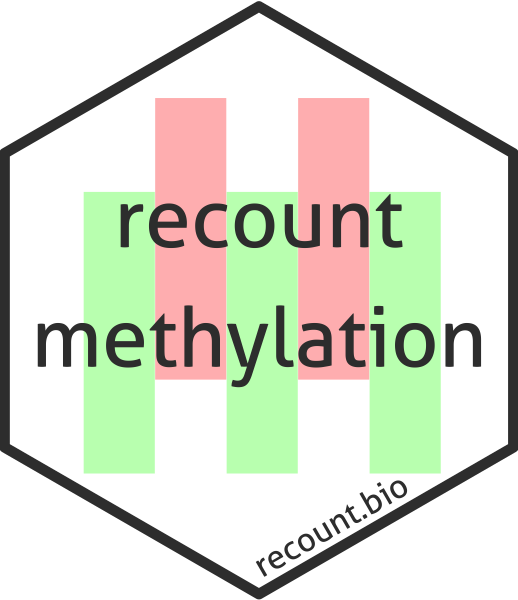Sean K. Maden, Reid F. Thompson, Kasper D. Hansen, Abhinav Nellore
The recountmethylation package provides access to databases of DNA
methylation (DNAm) data from over 62,000 cumulative sample records with
IDATs in the Gene Expression Omnibus (GEO, available by November, 2020).
Samples were run using either of 2 Illumina BeadArray platform types,
either the older HM450K platform or the newer EPIC/HM850K platform. The
database compilation files include mined, mapped, and model-based sample
metadata, and DNAm data in the form of either raw/unnormalized red and
green signals, raw/unnormalized methylated and unmethylated signals, or
normalized DNAm fractions (a.k.a. "Beta-values").
From an active R session, install the latest available package version from Bioconductor with:
if (!requireNamespace("BiocManager", quietly = TRUE))
install.packages("BiocManager")
BiocManager::install("recountmethylation")
You may also install the package from GitHub using:
require(devtools); install_github("metamaden/recountmethylation").
See the package User's Guide vignette for more details and background about the datasets.
If you use recountmethylation in published work, please cite the following
paper:
Sean K Maden, Reid F Thompson, Kasper D Hansen, Abhinav Nellore, 'Human methylome variation across Infinium 450K data on the Gene Expression Omnibus', NAR Genomics and Bioinformatics, Volume 3, Issue 2, June 2021, lqab025, https://doi.org/10.1093/nargab/lqab025
Please note the following disclaimer regarding the data contained in the compilation files.
Databases accessed with recountmethylation
contain data from GEO (ncbi.nlm.nih.gov/geo/),
a live public database where alterations to
online records can cause discrepancies with
stored data over time. We cannot guarantee
the accuracy of stored data, and advise users
cross-check their findings with latest available
records.
